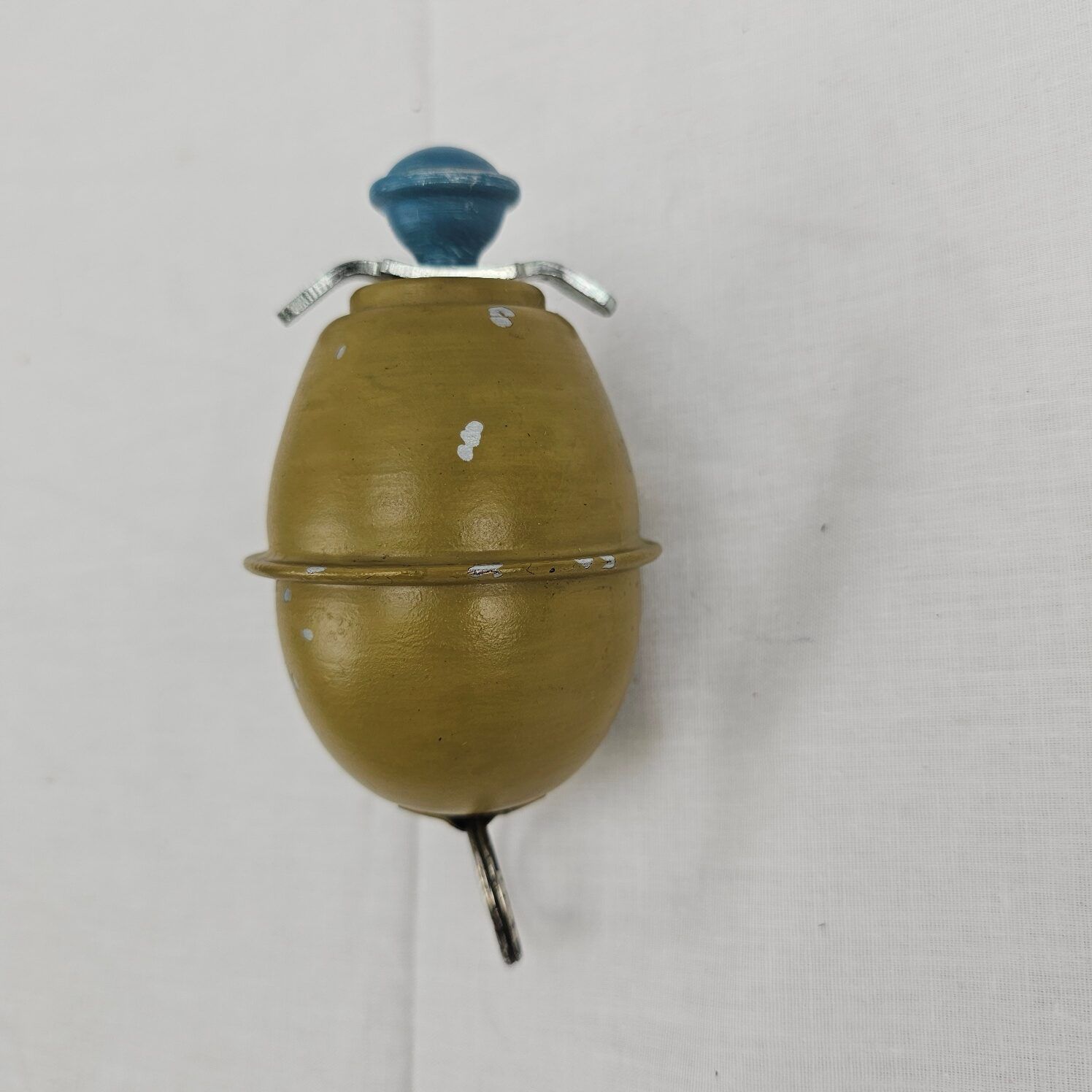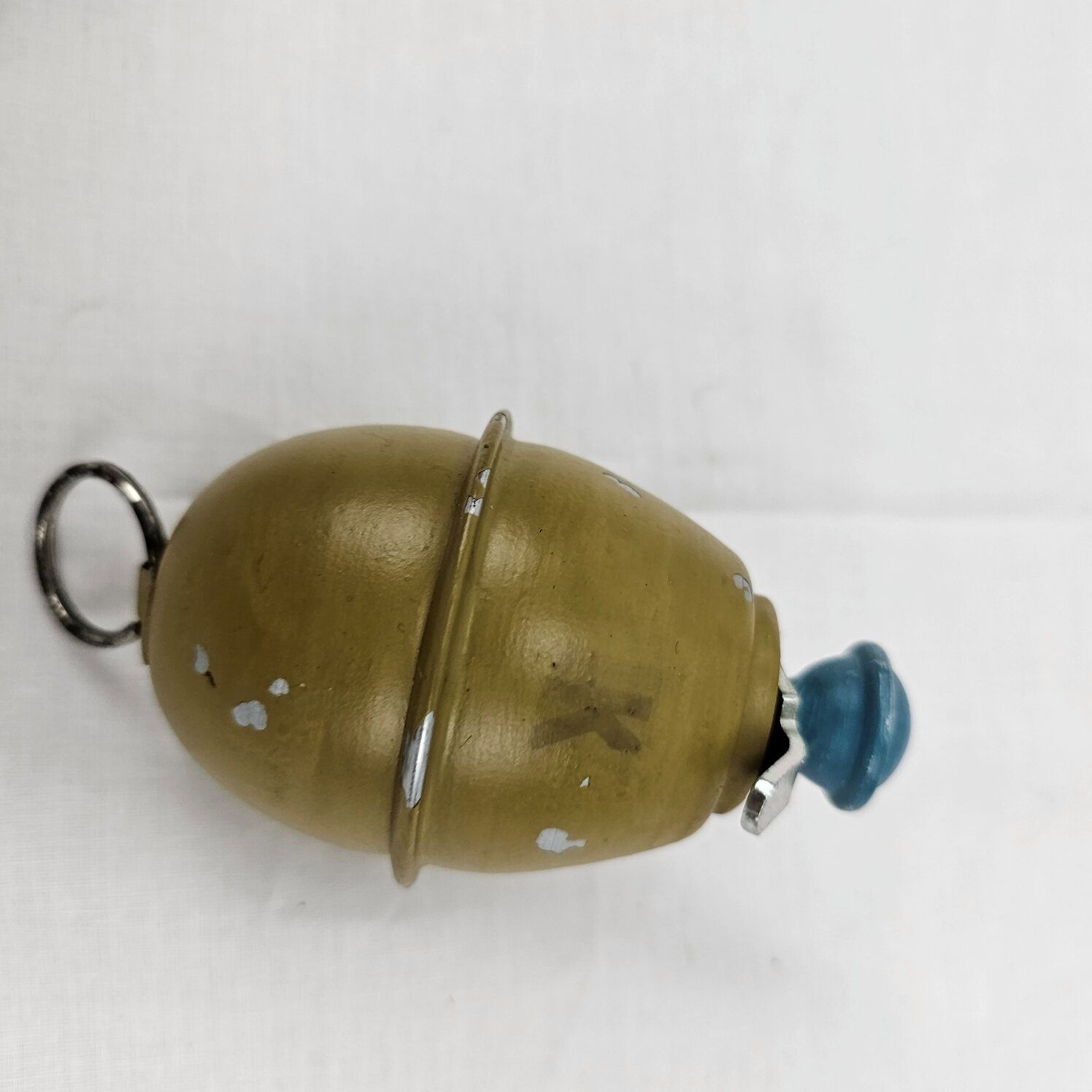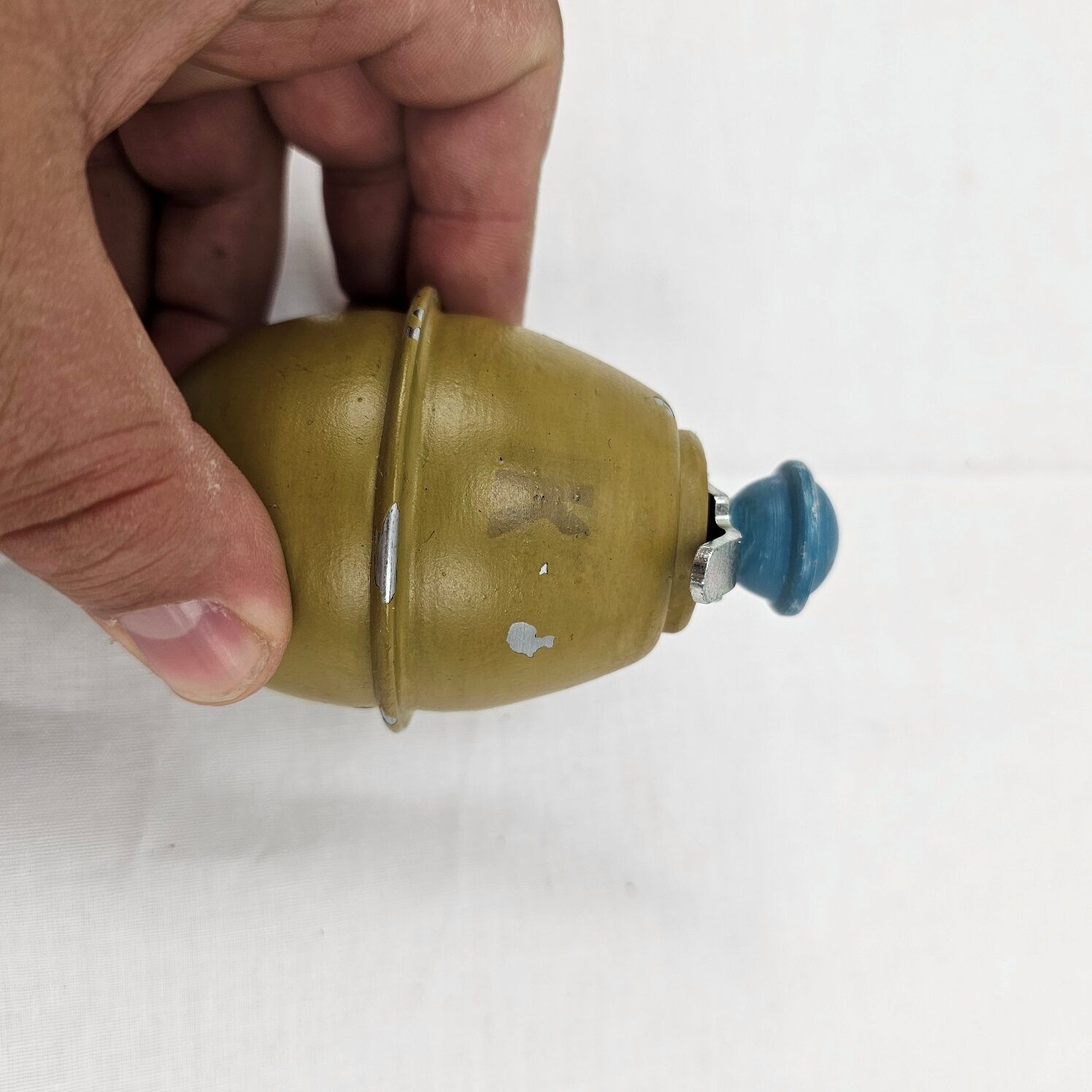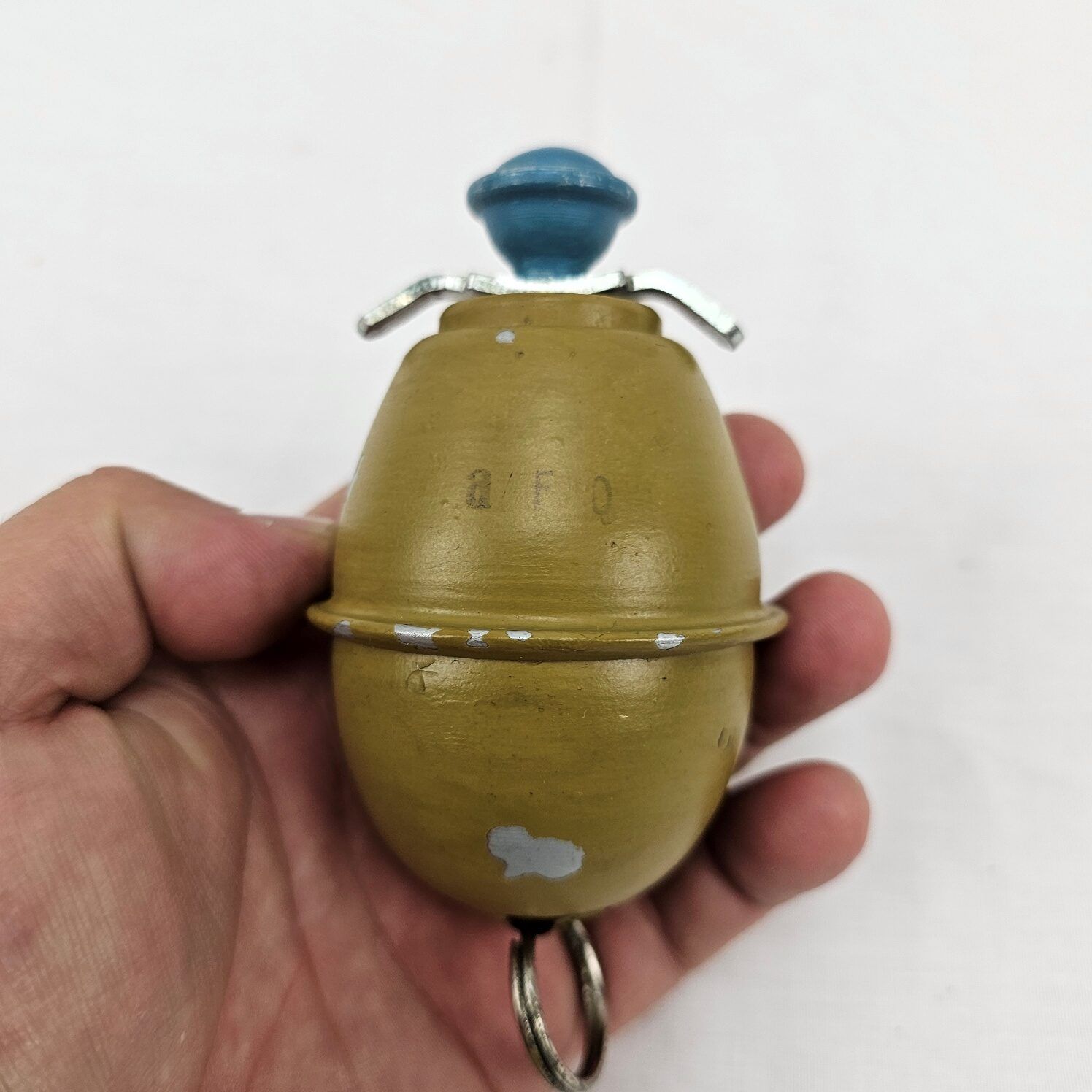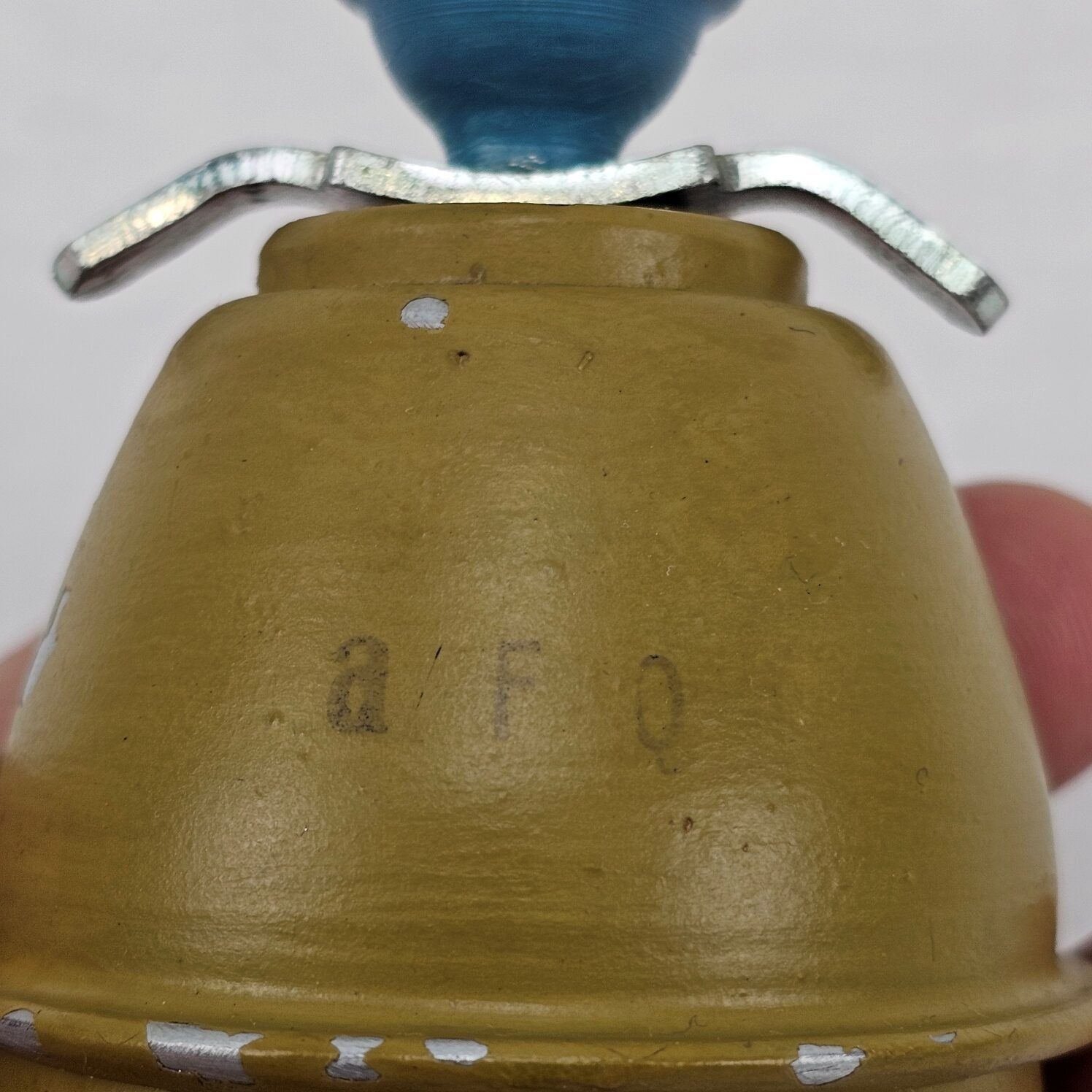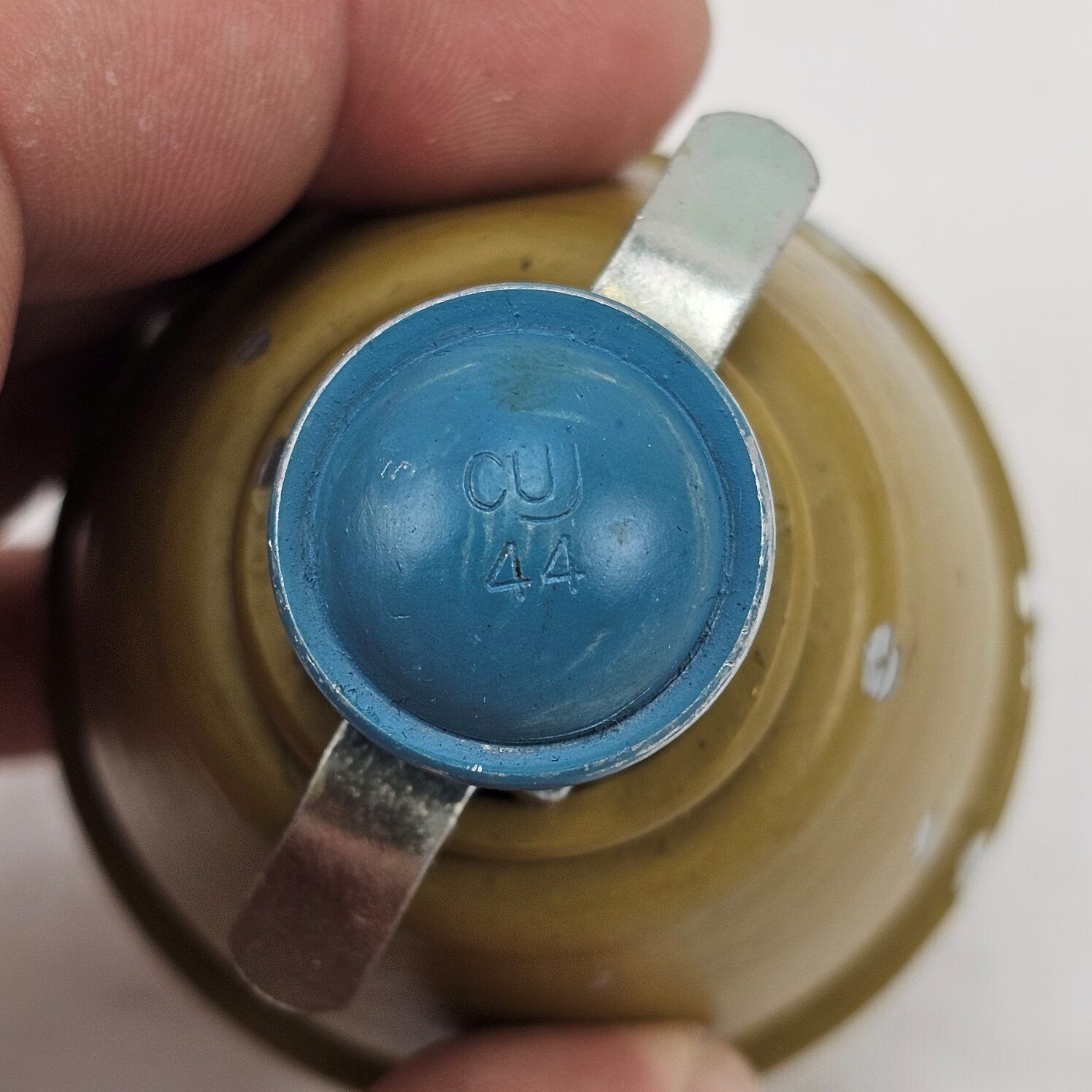~ WW2 German M39 Egg Grenade – Reproduction ~
The German M39 Egg Grenade, also known as the “Eihandgranate 39,” was a compact and efficient hand grenade used by the Wehrmacht during World War II. Its design emphasized portability and ease of use, making it a popular choice for German infantry.
Design and Features:
Shape and Size: The M39 was named for its egg-like shape. It was smaller and lighter than the standard stick grenades used by the Germans, making it easier to carry in large numbers.
Weight: Approximately 250 grams (8.8 ounces), which made it lightweight and convenient for soldiers to carry multiple grenades.
Dimensions: Roughly 60mm in diameter and 100mm in height.
Construction: The grenade consisted of a metal body filled with explosive material. The body was smooth and painted in a dark color, typically green or black.
Components:
Detonator: Located at the top of the grenade, the detonator was a simple pull-type ignition system.
Safety Cap: A metal cap that covered the pull-cord, which had to be unscrewed before the grenade could be armed.
Pull-Cord: Once the safety cap was removed, the pull-cord was exposed. Pulling the cord initiated a friction igniter, which set off a 4.5-second delay fuse.
Operation:
Unscrew the Safety Cap: The soldier would unscrew and remove the safety cap to expose the pull-cord.
Pull the Cord: The pull-cord would then be pulled sharply to ignite the delay fuse.
Throw the Grenade: The grenade would be thrown at the target, and the 4.5-second fuse would ensure that it exploded after being thrown, reducing the risk of it being thrown back by the enemy.
Usage:
Infantry Support: The M39 was primarily used by infantry troops for both offensive and defensive operations.
Trench Warfare: Its compact size made it especially useful in the confined spaces of trench warfare.
Urban Combat: The grenade was effective in urban combat scenarios, where its small size allowed for easy use in buildings and tight spaces.
Advantages:
Portability: Soldiers could carry several M39 grenades without being overly burdened.
Ease of Use: The simple arming mechanism made it quick to deploy.
Effectiveness: Despite its small size, the M39 was powerful enough to be effective against enemy personnel and light fortifications.
Disadvantages:
Limited Fragmentation: The smooth metal body produced fewer lethal fragments compared to other grenades, reducing its effectiveness in open areas.
Short Delay: The 4.5-second delay required precise timing when throwing to avoid premature explosion.



